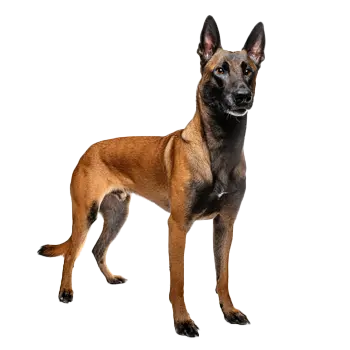The Belgian Malinois traces its origins to the pastoral landscapes of Belgium in the late 19th century, where diverse herding dogs worked farms throughout the countryside. These dogs varied considerably in coat type, color, and size across different regions, but all shared exceptional herding ability, intelligence, and versatile working capacity. Belgian farmers and shepherds selected working dogs based primarily on functionality rather than uniform appearance, valuing performance, stamina, and reliability above aesthetic consistency. This practical selection created a genetically diverse population unified by working characteristics rather than standardized appearance.
In 1891, Professor Adolphe Reul of the Belgian School of Veterinary Medicine conducted a comprehensive survey of Belgium's native herding dogs. He examined 117 dogs from various regions, carefully documenting their characteristics, working abilities, and regional variations. Professor Reul concluded that despite variation in coat and color, these dogs shared fundamental structural and temperamental qualities that distinguished them as a distinct breed type worthy of recognition and preservation. His research provided the scientific foundation for breed standardization efforts.
Following Reul's findings, enthusiastic dog fanciers founded the Club du Chien de Berger Belge (Belgian Shepherd Dog Club) in September 1891. This organization sought to standardize the breed while preserving the coat and color variations that naturally occurred across Belgium's regions. The founding breeders initially agreed to recognize all coat types and colors as belonging to one breed, provided dogs met structural and temperament standards appropriate for demanding herding work. This decision reflected practical recognition that working ability transcended cosmetic differences.
The four distinct varieties that exist today emerged from concentrated breeding programs in different Belgian regions during the 1890s. The short-coated fawn variety, later named Malinois after the city of Malines (Mechelen), developed in and around this industrial center in northern Belgium. Breeders in the Malines region favored dogs with short, practical coats suited to the area's temperate climate and varied working conditions. These dogs proved particularly adept at both herding and guarding work, displaying the intense drive and focus that characterizes the variety today.
Early Malinois breeders emphasized working ability above all other characteristics, selecting dogs based on herding instinct, trainability, stamina, and protective capabilities. This functional focus created a variety distinctly suited to demanding work, with the drive and intensity that would later make Belgian Malinois invaluable for police and military applications. The variety's shorter coat required less maintenance than longhaired varieties, increasing practicality for working contexts where extensive grooming proved impractical.
During the early 20th century, Belgian Malinois gained recognition throughout Europe for versatility and working excellence. These dogs excelled at herding, guarding, and various utility tasks on farms and estates. Their intelligence and trainability attracted attention from police and military organizations seeking capable working dogs. Belgian authorities began employing Belgian Malinois for border patrol and police work, establishing a tradition that would define much of the breed's 20th-century development.
Both World Wars significantly impacted Belgian Malinois development, as these dogs served extensively in military capacities. During World War I, Belgian Malinois worked as message carriers, ambulance dogs, and light artillery cart pullers, demonstrating remarkable courage and reliability under fire. Their performance in combat conditions enhanced the breed's reputation while simultaneously depleting breeding stock, as many excellent dogs died in service. The war years also disrupted civilian breeding programs throughout Belgium and elsewhere in Europe.
Post-war rebuilding efforts required dedication from committed breeders to restore Belgian Malinois populations and preserve working qualities. The breed gradually recovered during the 1920s and 1930s, though the variety remained less popular than some other Belgian types in North America. European breeders maintained strong emphasis on working ability, continuing to select primarily for functional characteristics rather than show qualities. This sustained focus on performance preserved the intense drive and working capacity that defines the variety.
World War II again called Belgian Malinois into military service across multiple armies. These dogs performed detection work, sentry duty, and various support roles, again demonstrating exceptional capabilities under extreme conditions. The breed's wartime contributions further enhanced its reputation among military and police professionals, though civilian populations remained smaller than other varieties. Post-World War II breeding programs continued emphasizing working qualities, maintaining the variety's functional excellence.
The late 20th century witnessed dramatic growth in Belgian Malinois popularity, particularly in working dog communities. Military and police organizations worldwide increasingly selected Malinois for protection, detection, and patrol work, recognizing their superior drive, trainability, and physical capabilities. United States military and law enforcement agencies began importing Belgian Malinois in significant numbers during the 1980s and 1990s, establishing the breed as the premier choice for demanding protection and detection applications.
The breed gained widespread public attention in the early 21st century through high-profile military operations where Belgian Malinois participated in special operations missions. Media coverage of these elite working dogs sparked increased interest in the breed, though responsible breeders and organizations emphasized that these intensely driven dogs require highly experienced handlers and demanding work to thrive. The breed's success in professional working contexts reflects over a century of selection for extreme drive, intelligence, and working capacity.
Today's Belgian Malinois represents the culmination of over 130 years of breeding focused primarily on working ability rather than appearance. While show lines exist, working lines dominate the breed worldwide, with most puppies destined for police, military, or competitive sport homes rather than traditional pet situations. The variety has evolved into perhaps the world's premier protection and detection dog, maintaining the herding heritage and working versatility that Belgian shepherds first developed in the late 19th century.

